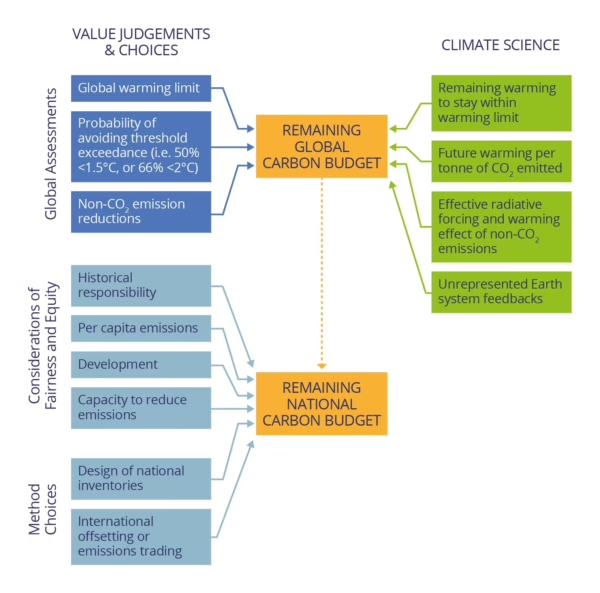ZERO IN on the remaining carbon budget and decadal warming rates
Authors
Alexander Nauels, Debbie Rosen, Thorsten Mauritsen, Amanda Maycock, Christine McKenna, Joeri Rogelj, Carl-Friedrich Schleussner, Ela Smith, Chris Smith, Piers Forster

The annual ZERO IN reports by the CONSTRAIN project inform on crucial scientific elements relevant to the Paris Agreement in a timely manner, providing background and context on new developments that relate to the science-policy interface.
This first report zeroes in on the remaining carbon budget as well as on projected surface warming rates over the next 20 years. Both topics are crucially important when discussing the implementation of the Paris Agreement. Estimates for these quantities will be updated annually as part of the CONSTRAIN project.
Key findings
The remaining carbon budget
- Different estimates and assessments of the remaining carbon budget in the recent scientific literature have caused some confusion. Building on the methodology used in the IPCC Special Report on Global Warming of 1.5°C, this report presents a robust framework reconciling different methodological choices and provides a single best estimate for a Paris Agreement compatible remaining carbon budget.
- When using the carbon budget within climate policy, policy-makers need to be aware that it is a value judgement-dependent Earth system characteristic, that is, the concept combines science with value judgements. Value judgements around warming targets and respective probabilities of meeting them, for example, are important considerations for the carbon budget’s quantification and use.

- From the start of 2020, the remaining carbon budget is 985 Gt CO2 for limiting warming to 2.0°C with a 66% probability. To limit warming to 1.5°C with a 50% probability, it is reduced to 395 Gt CO2, and 235 Gt CO2 for a 66% probability.
Decadal warming rates
- If warming continues at its current rate, we are likely to reach 1.5°C between 2030 and mid-century. The rate depends on mitigation efforts, and would likely increase to unprecedented levels if the current Nationally Determined Contributions (NDCs) or stronger mitigation efforts are not delivered. This increase would reduce the timescales available for effective adaptation, in particular for the most vulnerable.
- Conversely, stringent mitigation action could reduce the rate of human-induced near- term 2020-2040 warming by up to half. This underscores the benefits of near-term emission reductions including up to 2030, the timescale of the current NDCs.
- Based on our present best scientific understanding, very high near-term warming rates – double or more of those observed in the recent past – are of low likelihood. However, this does not rule them out as a possibility, emphasising the need for urgent mitigation and action towards net zero emissions to contain this risk.











